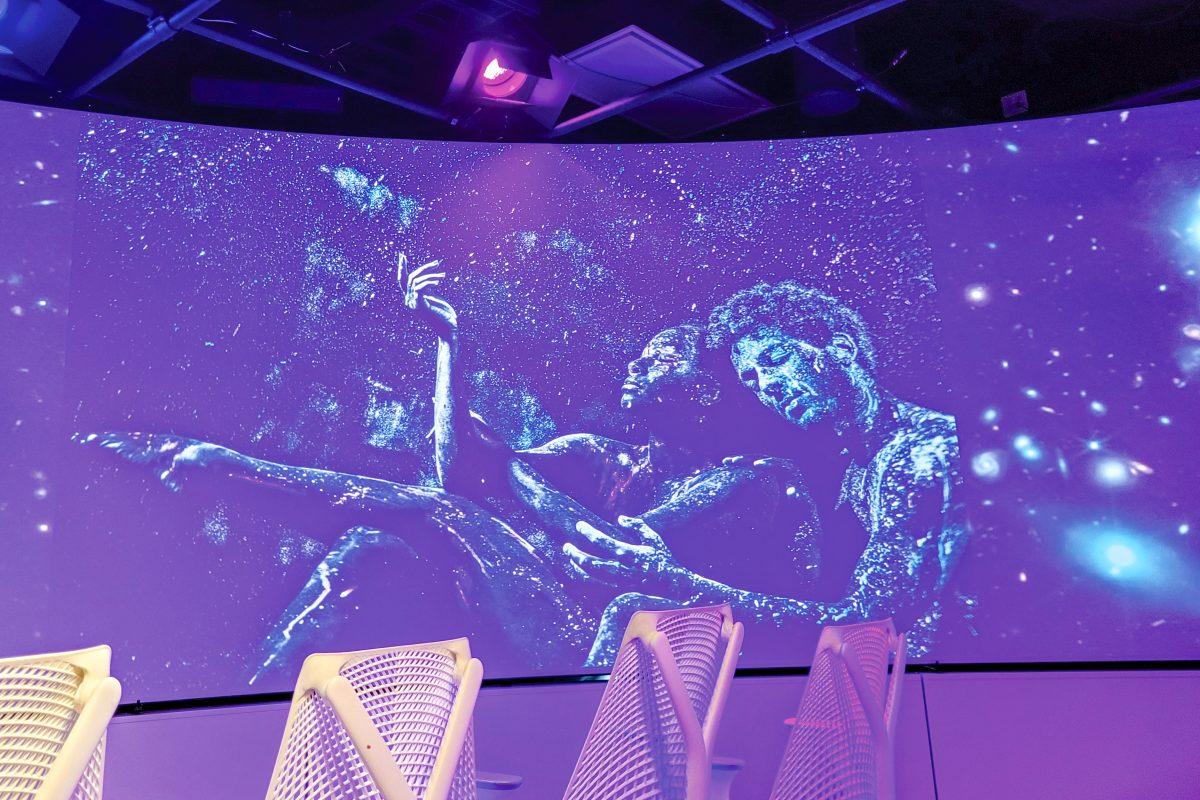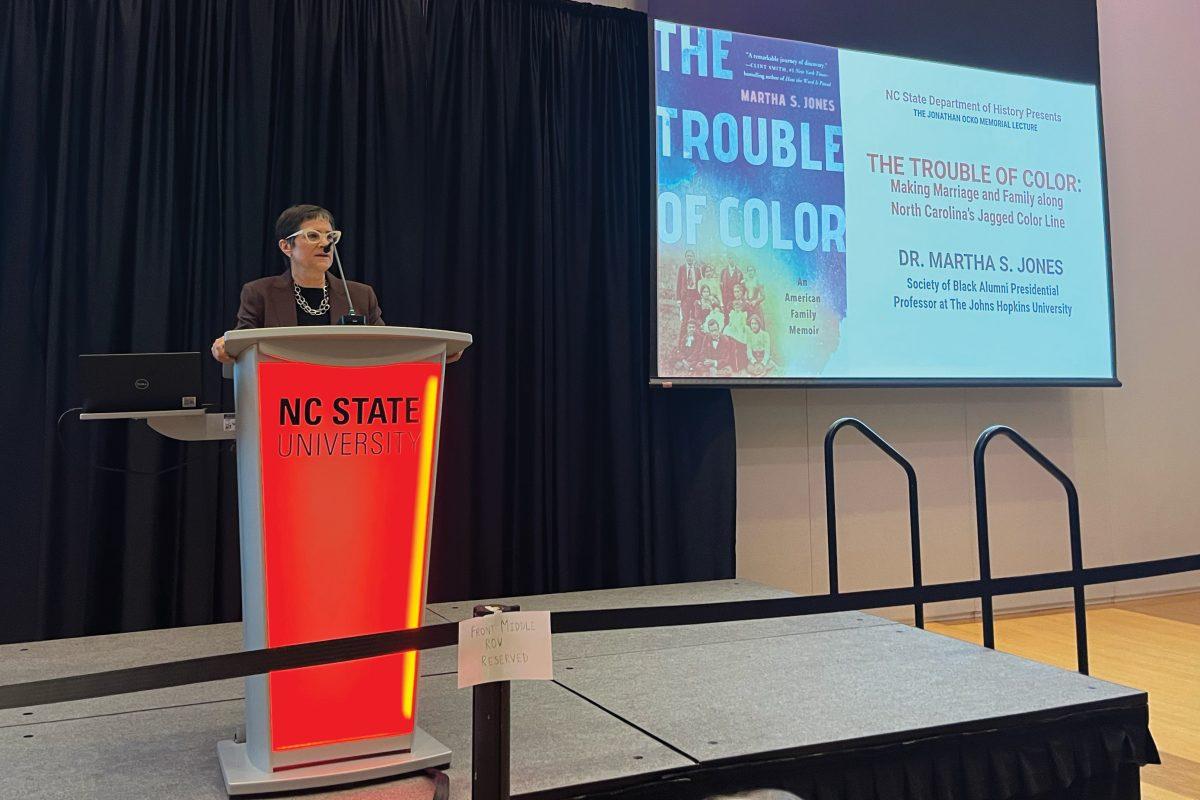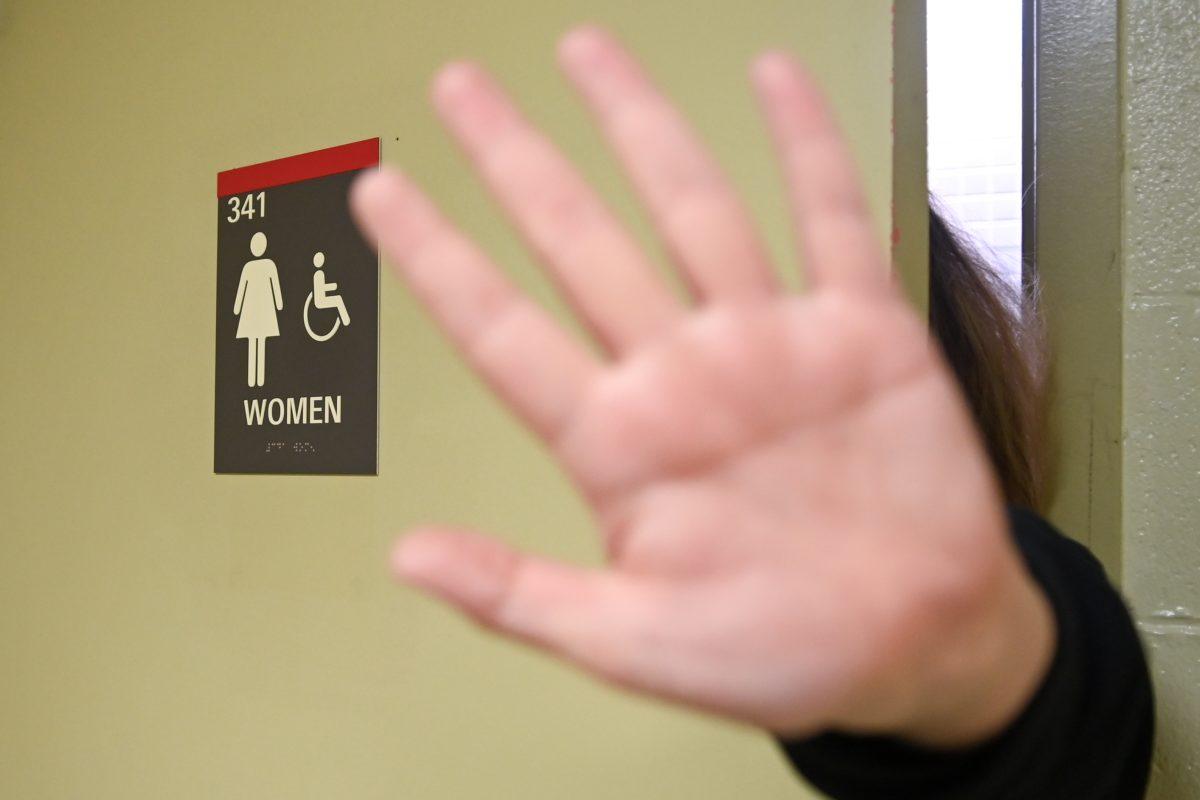The African American Cultural Center and Multicultural Student Affairs hosted Mikael Owunna, a Nigerian American multimedia artist and engineer, and a display of his works in “Black Transfigurations” in Hunt Library’s Teaching and Visualization Studio on Feb. 8.
Owunna has received international acclaim for his photography and dance productions featuring ancient African creation myths and luminescent body art, which aims to normalize Black queerness.
Owunna said he was outed as queer to his Nigerian family and was put through a series of exorcisms while visiting his family abroad during his college years at Duke University. Owunna’s family told him being queer was not a part of their culture.
Owunna said following this experience he was determined to prove that queer identities have a place in African culture.
“After that, I spent several months spiraling into a lot of anxiety and depression, I didn’t feel like I had a right to exist,” Owunna said. “And then I picked up a camera, and the camera became my voice.”
Owunna’s first photographic venture was in “Limitless Africans,” in which he photographed 50 LGBTQ+ African immigrants, refugees and asylum seekers across 10 countries.
While working on this project, Owunna said he was introduced to a spiritualist in the West African country Burkina Faso. There, Owunna was exposed to African cosmologies and the sacred role that queerness plays in them.
“There’s common understanding you see across the continent of this primordial, androgynous Black figure that creates the entire universe,” Owunna said. “And so people who would have identified as LGBTQ who could migrate both masculine and feminine energies were understood as preserving a special connection to the creator. And so from that perspective, we are the diviners, the mystics, the shamans and the healers, by the sacred role in our society.”
From this point, Owunna said his path had become clear.
“The work became an exploration not only of contemporary narratives around sexuality and gender from LGBT African immigrants I was interviewing, but it also became a way of connecting us in a contemporary context to these past lineages of queer African shamans as well,” Owunna said.
Motivated by this discovery, Owunna paired his engineering skills with his mission to portray queerness’s place in African cosmology in his next project, “Infinite Essence,” which depicts Igbo and Malian creation stories through bare bodies painted with fluorescent paints that only glow under ultraviolet light. Owunna developed a camera flash that only captures ultraviolet light and photographed the models in complete darkness to capture a celestial effect.
“One of the things to think about, or worth meditating on, is this tension that we have between what is visible to the human eye, and what is actually the true essence of Blackness itself,” Owunna said. “And so, in the visible spectrum, there are all these negative projections that are thrown upon Blackness. But when we use this invisible spectrum of light — by ultraviolet light — Blackness is eluded as the divine celestial source of all of life, as enshrined within African cosmological traditions.”
Owunna said his background in engineering enables him to bring awareness to the historical significance of queerness in African cosmology through rising technologies.
Other than photography projects, Owunna has created animations, NFTs and dance film projects in a similar style to that of “Infinite Essence.” Owunna’s works have been presented on digital billboards and digital kiosks across the country and have appeared in galleries around the world.
Breaking down Western modes of thought and proposing ancient African approaches was an essential part of Owunna’s presentation. He said his work demonstrates the African concept of integrating disciplines, whereas Western traditions separate them.
“What does it take to build a pyramid?” Owunna said. “It takes astronomy. It takes architecture. It takes civil engineering. It takes priests doing the religious work. It’s a higher complex that integrates all of these modes of knowledge simultaneously that then reveal the true nature of human genius.”
Andaiye Qaasim, assistant director of the African American Cultural Center, said she had always wanted to bring Owunna and his works to campus, and now had the opportunity once this year’s Black History Month theme was decided at the Center’s Black Wellness Roundtable.
“With that conversation, we started talking about Black History Month and really wanting to merge this conversation about wellness and being well with also spirituality. … So I think that was a perfect theme to bring together,” Qaasim said.
Qaasim said Owunna’s work resonates well at NC State, drawing similarities to his work and the Black Research Symposium.
“We live in a society today that kind of denigrates the humanities because that’s the source of the soul,” Qaasim said. “And when you look at his work, I can’t think of many examples that are coming together, merging technology, with sciences, with art … and particularly also bringing that intersectional narrative about Black identities as well.”
Owunna’s “Infinite Essence,” NFT projects and film “Obi Mbu” are currently on display at the North Carolina Museum of Art in the “Reconstructing the Primordial House” exhibition. The exhibit is open to the public until Dec. 31, 2024.












